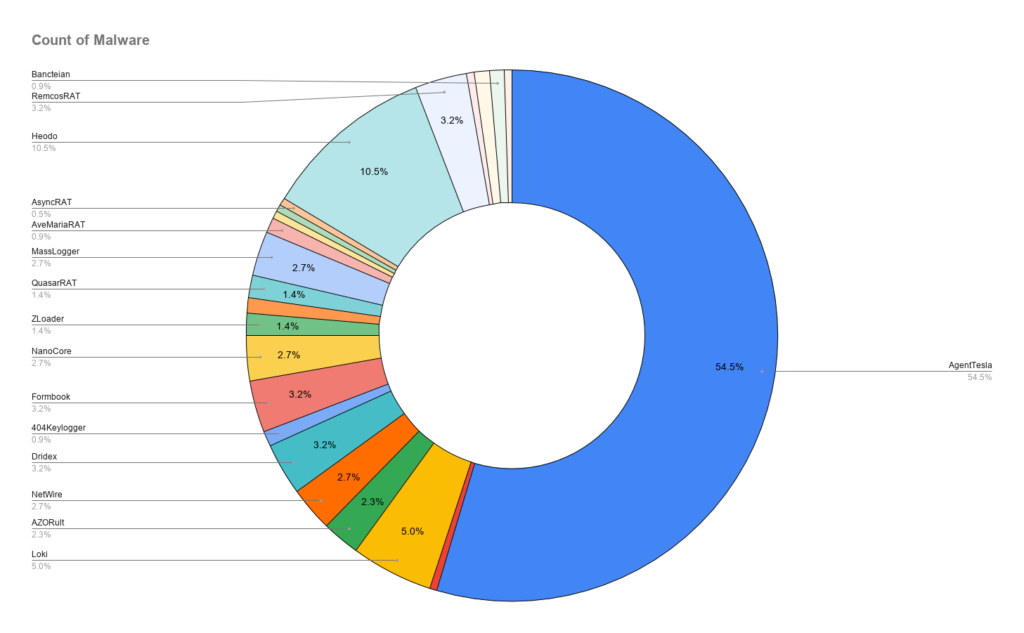An output of my most recent script (see my post “Malicious Attachment Analysis Script“), is the ability to create statistics and the data-set to understand what kind of malware campaigns are being delivered by email attachments.
In October 2020 I received a total of 76,888 emails (2,480 per day) to my spam traps. Obviously not all of the emails contained a malicious attachment, as the emails also fall into the categories phishing emails, general spam (e.g. drugs, prizes won), others.
From all emails received, a total of 221 unique malicious attachments have been identified. There have been far more malicious files, but they are either not identified or a duplicate by file hash and thus not reported here. Also, if a malware campaign consisted of links to downloads, they are also not included in this list.
The vast majority (over 50%) is being identified as malware family “AgentTesla” by MalwareBazaar signatures.
| Malware | Count |
|---|---|
| AgentTesla | 120 |
| Heodo | 23 |
| Loki | 11 |
| Dridex | 7 |
| Formbook | 7 |
| RemcosRAT | 7 |
| MassLogger | 6 |
| NanoCore | 6 |
| NetWire | 6 |
| AZORult | 5 |

The largest sector receiving those emails is legal services. That is something I have observed for a while and now I got the data set that clearly confirms my assumption.
The top 10 sectors in my spam trap targeted by malware this month are:
| Sector | Count |
|---|---|
| legal | 137 |
| electronics / import | 21 |
| non-profit | 13 |
| free service | 12 |
| banking | 7 |
| electronics | 7 |
| newspaper | 5 |
| recruitment | 3 |
| sport marketing | 3 |
| advertising agencies | 2 |
Also interesting observation, legal services are mostly targeted by “AgentTesla” malware, followed by “Loki” and “Formbook” and “NetWire“. All tools used to steal sensitive information and documents or remotely control an infected computer.
If you have any questions, please post a comment or send me a message on Twitter @cocaman.
Have you tried to identify malware in docx/xlsx with VBA with analyzing malformed zip-file? (using Mr. Stevens “zipfile.py” extended to a scanner, checking the Date, “macro” in [content.xlm] etc)